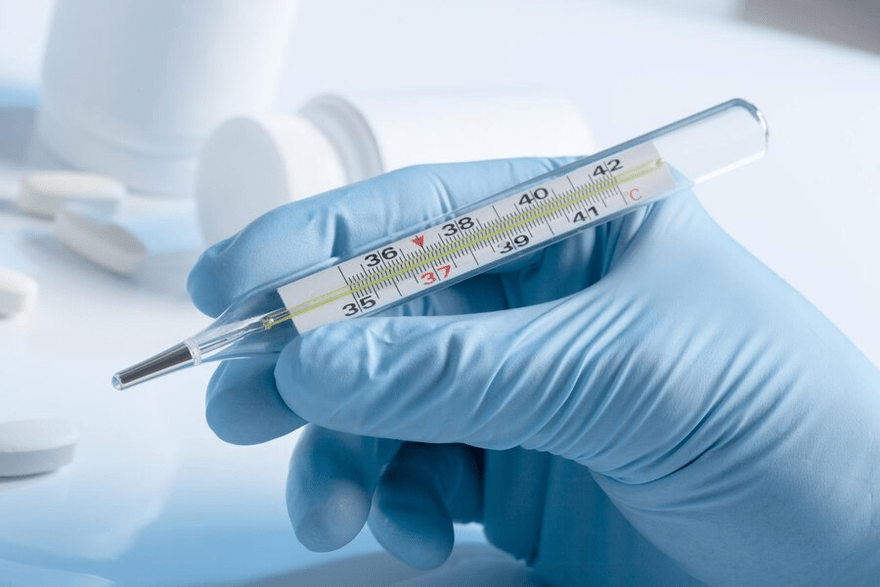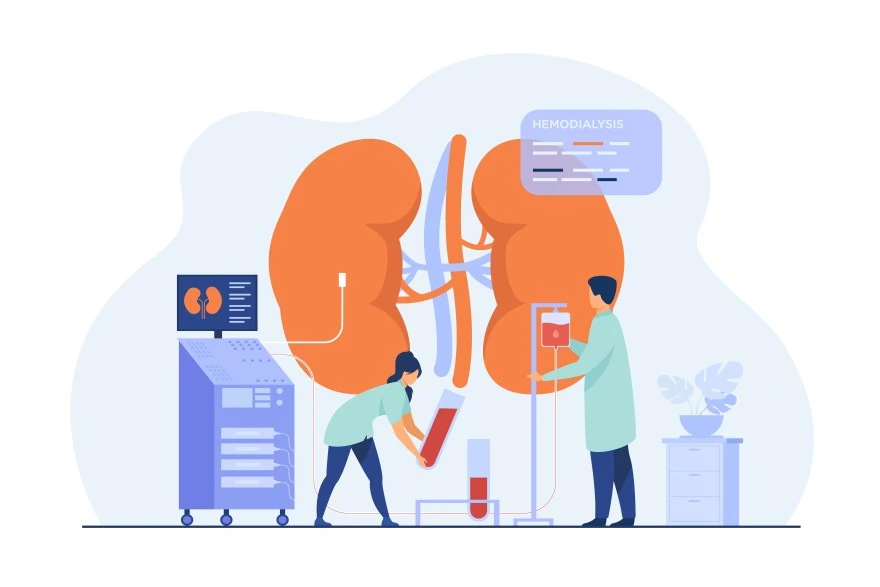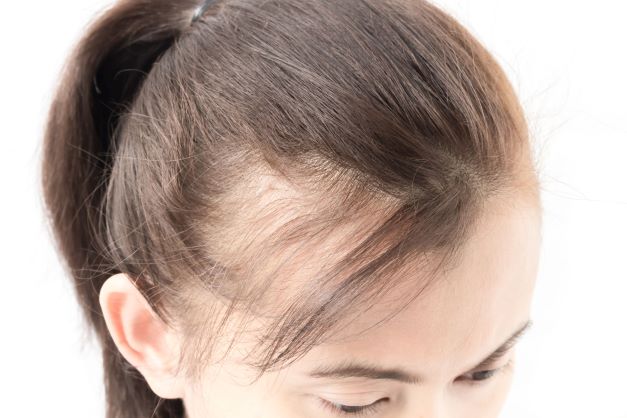Preventive Healthcare
Understanding Scarlet Fever: Symptoms, Treatment, and Rash

Table of Contents
- What is Scarlet Fever?
- What is Scarlet Fever Tongue?
- Who Does Scarlet Fever Affect?
- What Causes Scarlet Fever?
- How Do You Get Scarlet Fever?
- What are the Symptoms of Scarlet Fever?
- What Does Scarlet Fever Rash Look Like?
- Is scarlet fever contagious?
- Who is at Risk of Scarlet Fever?
- How is Scarlet Fever Diagnosed?
- What is The Treatment For Scarlet Fever?
- How can I take care of my child at home?
- How Can I Prevent Scarlet Fever?
- How Long Does Scarlet Fever Last?
- When should I see a doctor?
- Can I Get Scarlet Fever Twice?
- How Severe is Scarlet Fever?
- Conclusion
What is Scarlet Fever?
Scarlet fever, also known as scarlatina rash, is an infectious disease caused by a group of bacteria known as Streptococcus. This is the bacteria that also causes strep throat. This streptococcus bacteria creates a poison that can cause your skin to break out in a bright red rash all through your body. This is why it is known as scarlet fever.
What is Scarlet Fever Tongue?
One of the most prominent scarlet fever symptoms is that your tongue gets swollen and appears red and bumpy. In some cases, it can also look like a strawberry and hence can be called strawberry or scarlet fever tongue.
Who Does Scarlet Fever Affect?
Scarlet fever can affect people of all ages but is most commonly found in children ages 5 to 15.
What Causes Scarlet Fever?
Scarlet fever is a bacterial disease caused by a group A beta-hemolytic Streptococcus or A strep that also causes strep throat and impetigo, which can result in rheumatic fever. This bacteria produces a toxin that can lead to a red rash all over the body called scarlet fever.
How Do You Get Scarlet Fever?
A person infected with scarletina rash can spread it when coughing or sneezing. Coughing and sneezing create tiny droplets of saliva that contain the bacteria. When these droplets are exposed to the air, they can cause the spread of the disease. So, when you have scarlet fever, the bacteria group A strep can live in your nose, ears, skin, and throat. You can get scarlet fever if you:
- Touch any surface containing the droplets, then touch your mouth or nose.
- Breathe in the droplets that contain the bacteria
- Sharing a plate or glass with someone who is sick
- Scratch or touch skin sores that A Streptococcus causes
In rare cases, scarlet fever can also be spread by eating food that is not correctly handled.
What are the Symptoms of Scarlet Fever?
A sore throat is usually the first scarlet fever symptom you may experience. Another noticeable sign of scarlet fever is the red, bumpy rash; less than 10% of strep cases can have an accompanying rash. Some of the scarlet fever symptoms in adults include:
- A red rash that first appears around your neck and chest.
- The rash may then spread to your arms, back, legs, and face.
- Pale area near or around your mouth
- Small red or purple bumps known as petechiae or small creases near your underarms, elbows, and groin can become a darker, brighter red shade than the rest of the rash.
- Peeling can occur 7 to 10 days after your rash fades away, especially on your fingers.
For throat and mouth, scarlet fever symptoms include:
- The tongue can develop a white-colored coating
- It can swell and become red and bumpy, making it look like a strawberry
- Your throat and tonsils can become sore, swollen, and red
- Tonsils and tongue can develop a yellow or white coating or tiny dots of yellow or white pus
- Have difficulty swallowing
Other common scarlet fever symptoms include:
- Fever
- Stomach pain
- Chills
- Headaches
- Nausea and vomiting
- Body and muscle aches
- Decreased appetitive
- Small red or purple bumps on the roof of your mouth
What Does Scarlet Fever Rash Look Like?
A scarlet fever rash can start as a small, flat splotch on your skin. This can gradually turn into fine bumps that resemble a terrible sunburn. Some people also describe this rash as looking and feeling rough with the texture of sandpaper.
Is scarlet fever contagious?
Scarlet fever is highly contagious and can spread through tiny droplets sent into the air when an infected individual sneezes or coughs.
Who is at Risk of Scarlet Fever?
Anyone can get scarlet fever, but it is more common in kids between 5 and 15. Cases of scarlet fever in adults usually involve parents of kids within this age group or those who come in frequent contact with children of this age group. Sporadic cases are found in babies or toddlers.
Your risk of contracting scarlet fever or scarlatina rash increases when coming in contact with someone with scarlet fever. This fever can quickly spread in a larger group, which is why scarlatina disease outbreaks are found in daycares, schools, neighbourhoods, and communities.
How is Scarlet Fever Diagnosed?
A physical examination of your symptoms is usually the first step in diagnosing scarlatina disease. Your healthcare provider will then do a rapid strep test to check for the group A strep bacteria, which involves swabbing your throat and testing the collected sample. This is the quickest way to understand your illness because of the group A strep bacteria. However, the drawback of this test is that it can miss almost 30% of strep cases.
If your rapid strep test returns negative, your healthcare provider will request a throat culture. This throat culture takes 24 to 48 hours to grow and determine if the group A bacteria can grow from this sample. A throat culture is used to find a source of infection that could have been missed during the rapid strep test. Another standard test for scarlatina rash is the Rapid Molecular Strep test.
What is The Treatment For Scarlet Fever?
If you test positive for scarlet fever, you may undergo a round of treatment with antibiotics. These antibiotics kill the bacteria that cause the disease in your body and will also help shorten the time you have the symptoms of scarlatina rash or feel sick. Moreover, the antibiotics used in scarlet fever treatment also prevent the further spread of scarlet fever and develop any complications due to this infection.
How can I take care of my child at home?
Scarlet fever treatment for your child usually includes rest, hydration, and care.
- As a swollen or sore throat makes eating painful, only serve your child soft foods and liquids. You can consider soups, teas, and slushies.
- Increase the water or electrolyte intake to ensure your child stays hydrated.
- Gargling with salt water can help reduce throat pain
- You can opt for over-the-counter children's pain medication like Acetaminophen or Ibuprofen for discomfort or fever. However, always ask your paediatrician before giving your child any medicine for scarlatina rash.
- Anti-itch medicine is often recommended in scarlet fever treatment plans as it helps relieve the itching caused by the rash.
How Can I Prevent Scarlet Fever?
Scarlet fever is very contagious as it is an airborne disease spread when an individual coughs or sneezes. Although there is no scarlet fever vaccine, you can take the following steps to avoid getting scarlet fever:
- Stay away from people who are infected with scarlet fever
- Cover your nose and mouth when you sneeze
- Use an alcohol-based sanitiser to clean your hands when you cannot access soap and water
- Wash your hands with warm water and soap for at least 20 seconds at regular intervals throughout the day.
- If you are showing symptoms of scarlatina disease, keep your toothbrush away from other brushes to avoid the spread
- Keep your kids home from school, and don't go to work if you show scarlet fever symptoms.
How Long Does Scarlet Fever Last?
Antibiotics for scarlet fever treatment help kill bacteria that quickly cause scarlatina rash. The rash will last for around a week, but it can continue to peel for several weeks until the skin heals. Your swollen glands may also last for a few weeks.
When should I see a doctor?
It would be best to visit or take your child to the doctor as soon they develop a rash. It is also essential to consult your doctor if your child has developed scarlet fever complications or any additional symptoms like fever, swollen glands, or throat. Even during antibiotic treatment, you will need to call your doctor if
- You do not see any improvement in your symptoms for over 24 hours
- If the symptoms of scarlatina rash start to worsen after beginning treatment.
It is essential to start treatment for scarlatina disease as soon as possible as delay in treatment can result in rheumatic fever and other serious health problems.
Can I Get Scarlet Fever Twice?
Getting scarlet fever once does not make you immune to catching it again. This is why you need to take the correct precautions when infected and dealing with sick individuals.
How Severe is Scarlet Fever?
Scarlet fever was more common in the early 20th century and was once considered a severe childhood disease. However, this is highly treatable with advancements in hygiene and medicine. But, if you do not visit your doctor as soon as the symptoms appear, it can lead to significant health issues like rheumatic fever.
Conclusion
If you display symptoms like fever, a sore throat, or a red bumpy rash, you must consult your doctor to determine if it could be scarlet fever or scarlatina disease. Your doctor can quickly tell if you have this condition and order a rapid strep test, throat culture, or any other blood test. Now, get yourself tested in the comfort of your home with Metropolis Labs. Offering more than 4000+ blood tests, get accurate results for your diagnostic tests with Metropolis today!












































